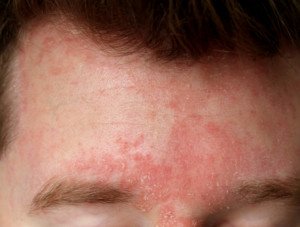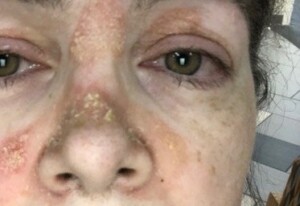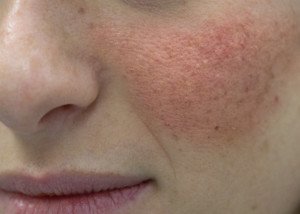
Drugs for seborrheic dermatitis can sometimes be ineffective while at other times work like magic.
Seborrheic dermatitis is no picnic when it flares up and causes itching, stinging and yellowish flakes to fall off your face.
Not to mention its classic appearance of reddish orange skin and crusty, whitish-yellow scabby bumps.
This condition often occurs on the forehead, eyebrows, eyelids, skin between the brows and lids, nose (especially where the creases are), scalp, neck and back.
Best Drug for Seborrheic Dermatitis

“Typically a medicated shampoo will help control seborrheic dermatitis,” says Dr. Janet Prystowsky, board certified dermatologist in New York, NY, with 30+ years’ experience.
Some people don’t think of shampoos containing drugs, but they do.
Dr. Prystowsky continues, “The top ingredients for these shampoos are zinc pyrithicone, coal tar, ketoconazole and selenium sulfide.”
Cream-like substances that a doctor prescribes also are a drug—in the form of a cream.
“A topical antifungal cream may be necessary as well,” says Dr. Prystowsky.
“More severe cases could call for corticosteroids. However, topical steroids should not be used for a prolonged period.
“Drugs like Elidel and Protopic, which inhibit your immune system, can help when topical steroids are no longer an option.
“Keep in mind that if you have a bacterial infection, then antibiotics may be necessary.”
Seborrheic dermatitis can sometimes flare up — or at least worsen — in response to mental stress or anxiety. Do not peel off the scales. This will not rid the condition.










































